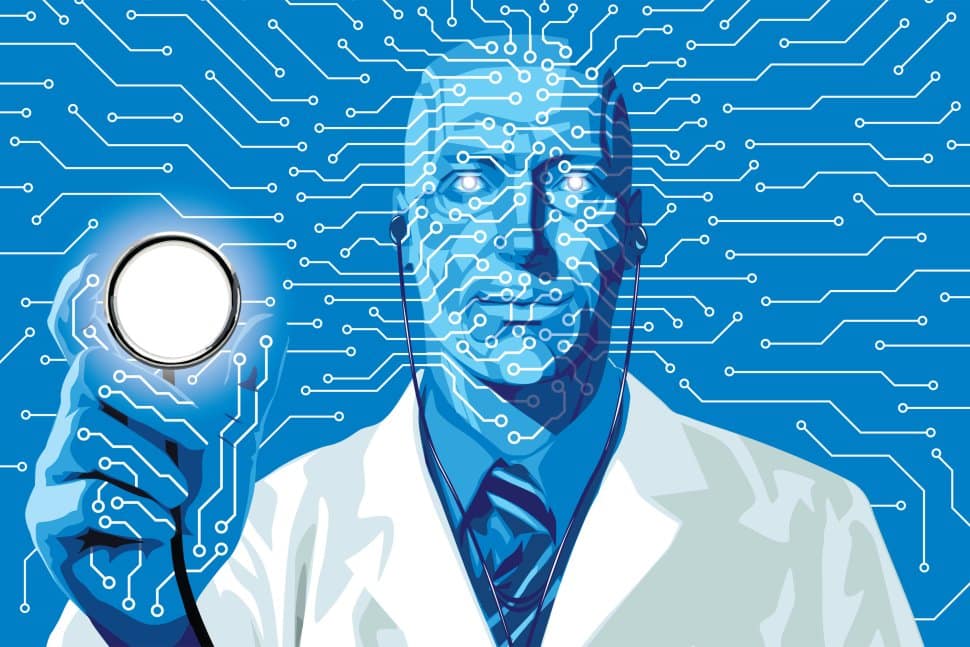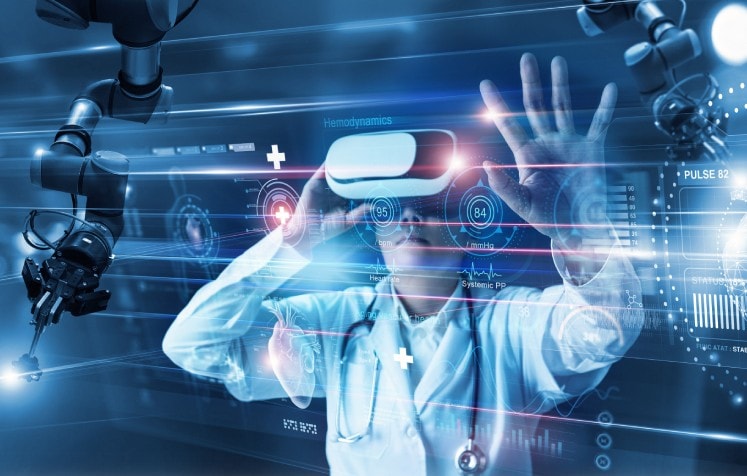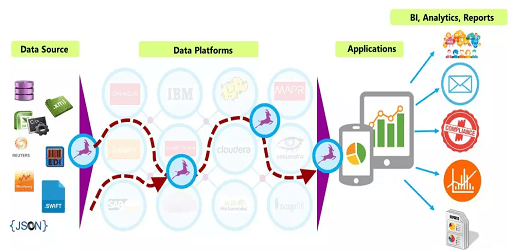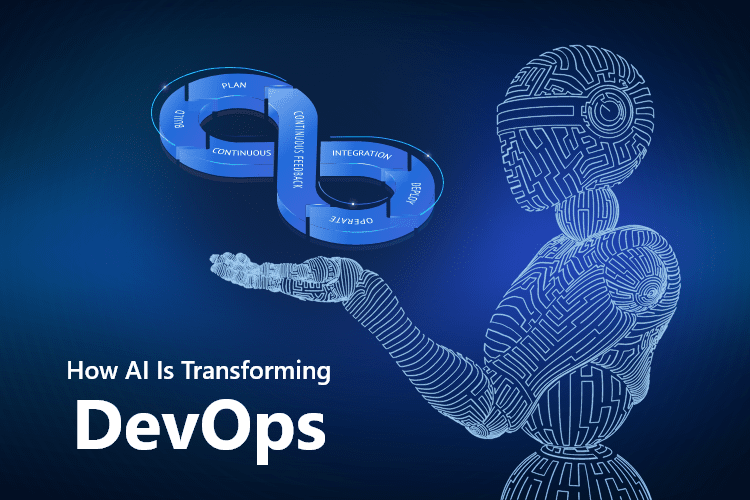Role Of Neural Networks In Artificial Intelligence: In science and technology, the term Artificial Intelligence plays a prominent role, and its recent advancements made AI gain more popularity for the concepts of Artificial Intelligence and Machine Learning.
The Role of Artificial Intelligence made it possible for machines to learn from experience to perform tasks more efficiently. The neural network is one of its advancements inspired by the structure of the human brain that helps computers and machines more like a human. This article helps you to understand the structure of Artificial Intelligence Neural Networks and their working procedure.
What is a Neural Network?
A neural network is either a system, software, or hardware that works similarly to the tasks performed by neurons of the human brain. Neural networks include various technologies like deep learning and machine learning as a part of Artificial Intelligence (AI).
Artificial Intelligence Neural Networks (ANN)
Artificial neural networks (ANN) are the key tool of machine learning. These are systems developed by the inspiration of neuron functionality in the brain, which will replicate how we humans learn. Neural networks (NN) constitute both the input & output layer and a hidden layer containing units that change input into the output so that the output layer can utilize the value. These are the tools for finding patterns that are numerous & complex for programmers to retrieve and train the machine to recognize the patterns.
Enrich your Career Potential as a AI Developer then enrol into our Artificial Intelligence Course
Role Neural Network in AI
Most business applications and commercial companies make use of these technologies. Their main aim is to solve complex problems like pattern recognition or facial recognition. Several other applications include — speech-to-text transcription, data analysis, handwriting recognition for check processing, weather prediction, and signal processing.
Structure of AI Neural Networks
ANN works quite similarly to the human brain. By making necessary connections, we can duplicate the brain’s working using silicon and wires, which act similar to dendrites and neurons. As dendrites accept stimuli from the external environment in the same way, the input creates electric impulses that travel through the neural network. ANN consists of several nodes which behave like neurons. The nodes are connected by links (wires) for communication with one another. Nodes take input data to perform small operations on trained data, and these operations are passed to other nodes (neurons). The output at the node is called its node value. Following is the image representing the basic structure of a neuron—Neural Networks’ role in Artificial Intelligence.

Need for Neural Networks
Neural networks have a remarkable ability to retrieve meaningful data from imprecise data used to detect trends and extract patterns that are difficult to understand either by computer or humans. A trained NN can be made an “expert” in the information that has been given to analyze and can be used to provide projections.
Advantages of Neural Networks

Some of the advantages of neural networks are listed below
- Self-organization: An ANN can generate its own representation of the information it receives at the time of learning.
- Real-Time Operation: ANN calculations may be done simultaneously, and some special (hardware) devices are manufactured, which take advantage of this capability.
- Adaptive learning: The capability to learn how to solve tasks is based on the data given for the training set.
- Redundant Information Coding Through Fault Tolerance: Semi destruction of a network leads to degradation of corresponding performance. Moreover, some networks will have the ability to retain data even when major network damage occurs.
Working of AI Neural Networks
An ANN includes a huge number of processors working parallelly, which are arranged in layers. The first layer receives the raw data as input, similar to optic nerves of human eye visual processing. Every successive layer receives the raw input data as output from the previous layer. Similar to neurons of optic nerve receiving signals from those close to it. The final layer generates output. The below image shows several layers—the role Of Neural Networks In Artificial Intelligence.
Subscribe to our youtube channel to get new updates..!

For More info: What Is Artificial Neural Network And How It Works?
Neural networks are adaptable, i.e., they can modify themselves according to the training and run parallelly to provide more information about the world. If the network generates a “desired” output, there is no need to change the trained input data and vice-versa. However, if the network generates an “undesired” output resulting in errors, the system modifies the trained input data to improve the results.
Types of Neural Networks
Neural Networks are of many types, and each of these comes with a particular use case.
Feedforward Neural Network
This is the most common type of neural network. Where information travels in uni-direction, that is, from input to output.

Recurrent Neural Network
A more frequently used network type in which data can be transferred in various directions. These possess greater learning capabilities and are often used for complex tasks like learning handwriting or language recognition.

Other types are rarely used, and some of them are Boltzmann machine networks, Hopfield networks, and convolutional neural networks. Role Of Neural Networks In Artificial Intelligence.
Convolutional Neural Networks
Convolutional Neural Networks are similar to ordinary Neural Networks but with two hidden layers, and they are made up of neurons that have the ability to learn. Every neuron receives some inputs, performs a dot product, and sometimes follows non-linearity. The complete network will show a single differentiable score function, i.e., from class scores on one end to the raw image pixels on the other end. And have a loss function (e.g., SVM/Softmax) on the fully connected layer. The tricks developed by developers to learning neural networks still apply. Choosing the proper network depends on your choice, and you must train raw data that is to be given as input according to your preference. At times, we can use multiple approaches in complex cases like voice recognition.


Top 10 Artificial Intelligence Technologies
How do Neural Networks learn from trained Data?
In the initial stages, neural networks (NN) are fed with huge amounts of data. Training is generally given by providing input and educating the network on what should be the output. For example, facial recognition is the latest technology implemented by many smartphone companies. Each input is gathered by identifying matching data, like the image of the person’s face, iris, and various facial expressions, and all these inputs have to be trained. Providing proper answers will allow it to accommodate its internal data to learn how better it can perform—role Of Neural Networks In Artificial Intelligence.
Rules must be defined so that each node decides what to be sent to the next layer considering its own inputs from the previous layer. This is done by considering many principles like genetic algorithms, fuzzy logic, gradient-based training Bayesian method. ANNs are given basic rules related to object relationships. The right decision must be taken in building the rules.
Strategies of Machine Learning in ANN
Artificial neural networks have the ability to learn, but they should be trained. There are many learning strategies, namely:
- Supervised Learning: It involves a scholar. For example, the scholar gives examples while preaching for a better understanding of the moral. In the same way, ANN implements pattern recognition, where it starts guessing while recognizing. Then, the trained data patterns provide the ANN with the answers.
- Unsupervised Learning: It comes to action when there is no sample data set with known answers. Searching for hidden patterns is one such example. The concept of clustering involves dividing the elements into sets of groups based on an unknown pattern that is carried out using existing data sets.
- Reinforcement Learning: It is a strategy built based on observation. The ANN decides by considering its environment. If the observations are supposed to be negative, the network adjusts its data to make a different decision for next time.
Related Article: Machine Learning Algorithms
Applications of AI Neural Networks
Recognition of Images was the first area where neural networks were successfully applied, but the technology expanded to many areas such as
- Natural language processing, translation, and language generation.
- Drug discovery and development.
- Stock market prediction.
- Delivery driver route planning and optimization.
- Chatbots.
Neural Networks currently in Practice
In what real-time applications are neural networks best suited for?
A NN has broad applicability to real-time business problems. Nowadays, they are successfully implemented by many industries, including the telecom sectors. Ever since neural networks evolved as a new trend, identifying patterns in data has become much easier as they are well suited for forecasting needs and prediction. For example, industrial process control, sales forecasting, data target marketing, validation, risk management, and customer research are some of its real-time applications.
To be more specific, ANNs are also used in recognition of speakers in communication (speech recognition), undersea mine detection, the Google Assistant (SIRI), recovery of telecommunications from faulty software, diagnosis of hepatitis, word texture analysis, three-dimensional object recognition, handwritten word recognition, and facial recognition.
The above ones are specific areas where neural networks are being applied today. Primary uses involve processes that operate according to strict patterns and have a huge amount of data. If the data involved is too heavy for a human brain to understand in a reasonable amount of time, automation is easier through artificial neural networks.
Limitations of Neural Networks
From a technical point of view, one of the biggest challenges is the amount of time it takes to train networks, requiring an acceptable amount of computing power for even complex tasks. The second most important issue is that neural networks are black boxes in which the user groups the trained data and receives answers. They are allowed to tune the answers, and the drawback is that they have no access to the exact process of decision-making. This is why researchers are working actively, but artificial neural networks play a huge role in changing day-to-day lives.
Future scope Artificial Intelligence Neural Networks
Being a highly competitive world, we have a lot to gain from neural networks. Their capability to learn through better examples makes them powerful and flexible. Moreover, we need not devise an algorithm to perform a particular task. We don’t require internal mechanisms of that task. These are well suited for real-time systems as they respond fast with the best computational times because of their parallel architecture.
Neural networks are also contributing to other areas of research like psychology and neurology. Neurology is used to investigate the internal mechanisms of the brain and model parts of living organisms. The most exciting aspect of neural networks is that there is a possibility that one day ‘conscious’ networks might arise. Some scientists argue that consciousness is a “mechanical property” and that conscious neural networks are realistic and possible. Neural networks have a huge potential, and we can get the best from them by collaborating with fuzzy logic, computing, AI, and ML.
If Are you interested to learn about Artificial Intelligence and becoming an Artificial Intelligence Expert? Then check out our Artificial Intelligence Certification Training Course at your nearby Cities.
Artificial Intelligence Course Hyderabad, Artificial Intelligence Course Pune, Artificial Intelligence Course Bangalore, Artificial Intelligence Course Dallas, Artificial Intelligence Course Newyork
These courses are incorporated with Live instructor-led training, Industry Use cases, and hands-on live projects. This training program will make you an expert in Artificial Intelligence SEO and help you achieve your dream job.










